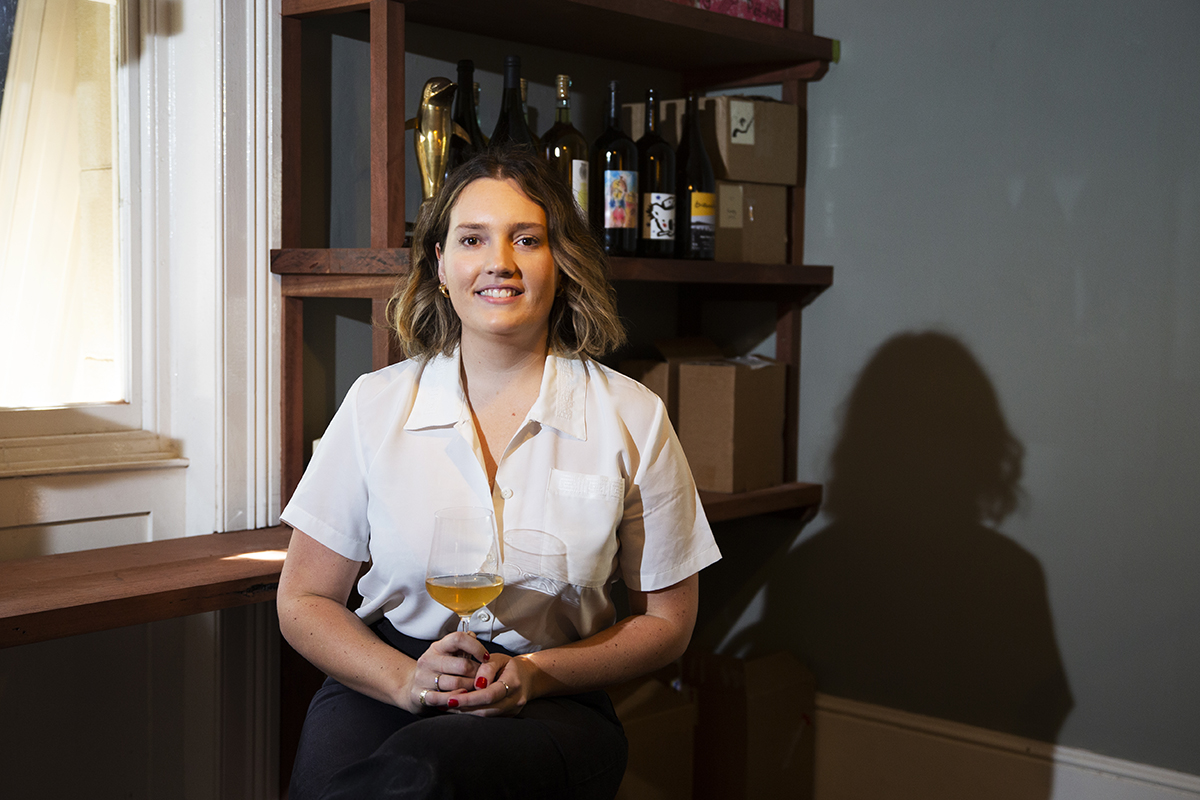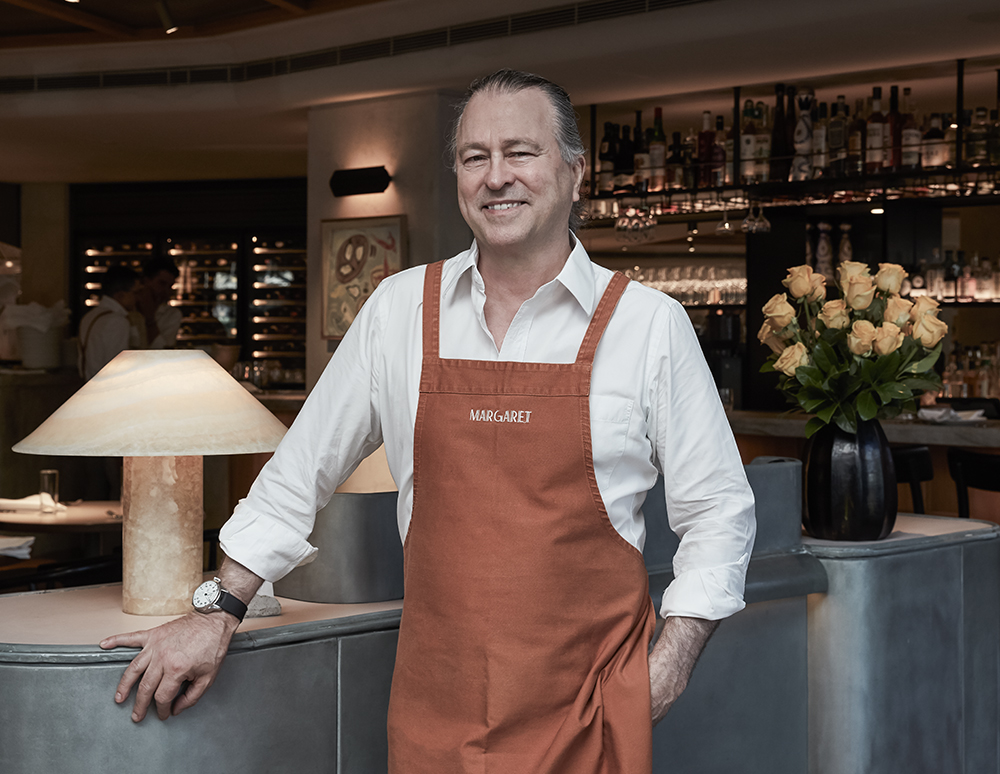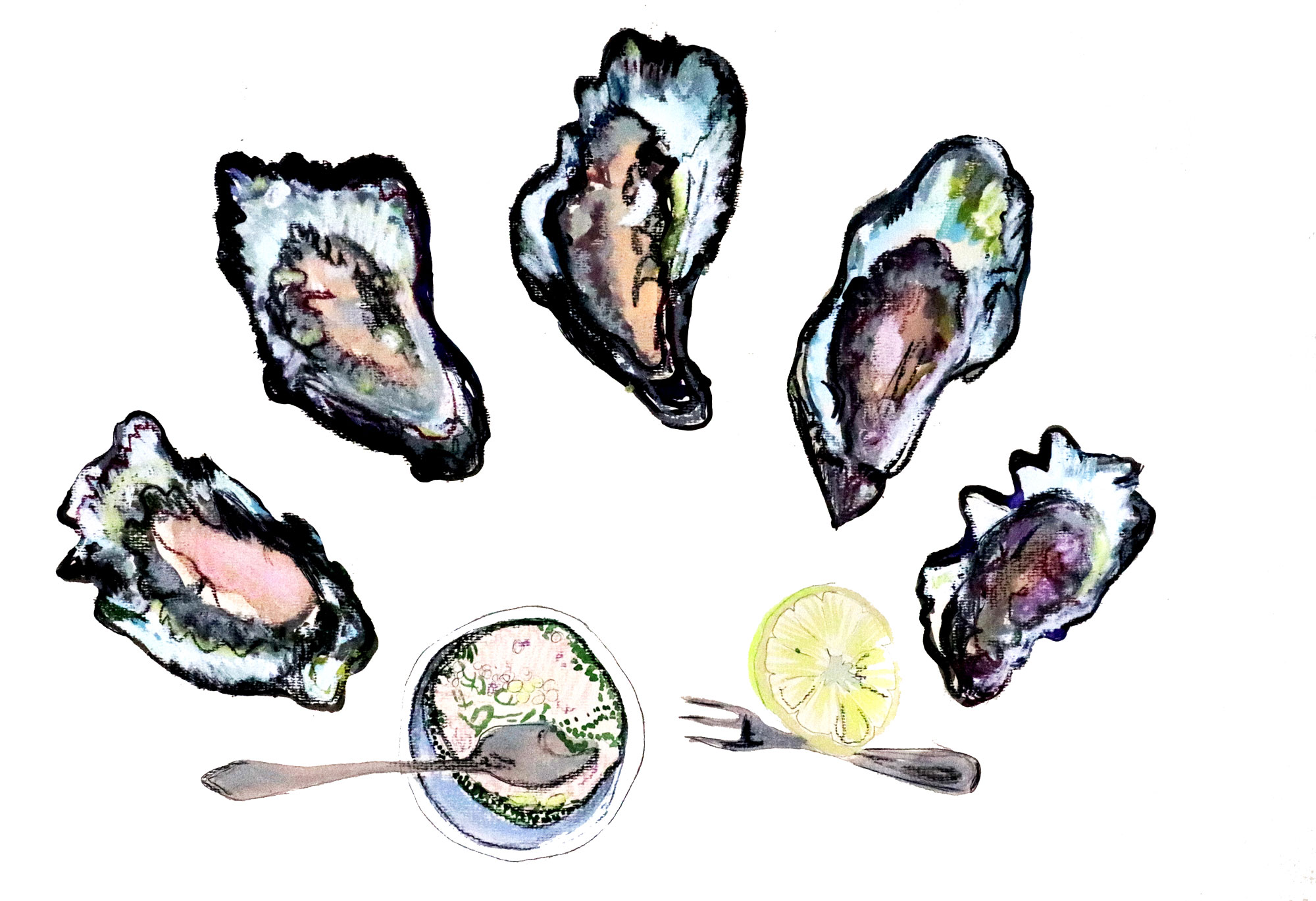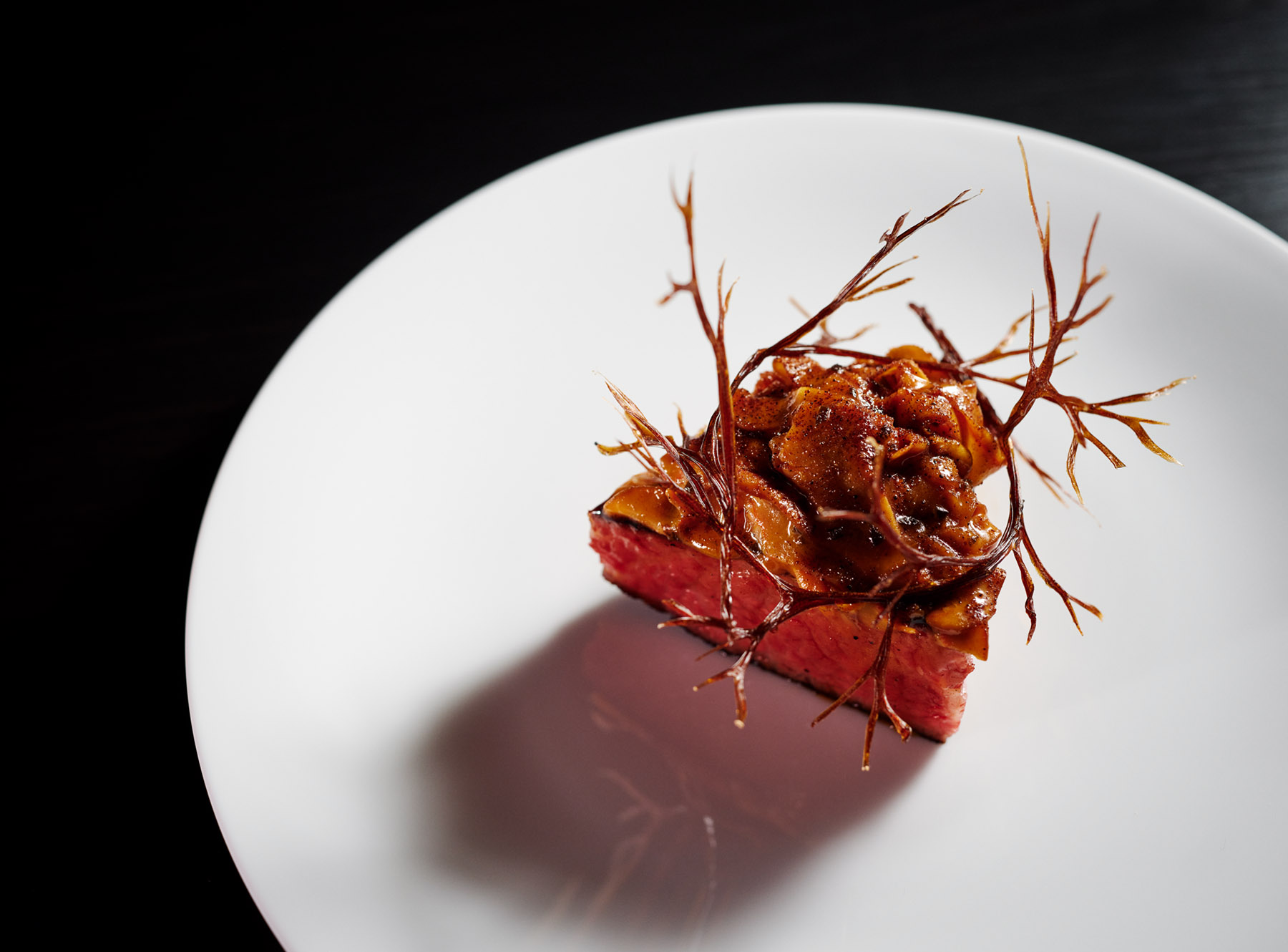
Culinary Masters Winners
We eagerly plate-up nine positives to come from a chaotic year in hospitality – introducing the impressive class of 2021.
Related articles
What a year. After the most challenging 12 months in hospitality in living memory, Australian hospitality has – somehow – produced a bumper crop of alluring new places to eat.
The class of 2021 would be impressive in a regular year, but in the face of the havoc wrought by the pandemic, their achievements are even more remarkable.
Whether it’s veterans rolling the dice on another round or young guns sharpening their focus, whether paying homage to the Francophile classics (if not with the odd cheeky antipodean twist) or forging new ground with less familiar plays of flavour, the talent is running hot.
In acknowledging this heady collection of talent, we’ve made changes to the distribution of the coveted Culinary Masters crowns. No longer the reserve of just young chefs making inroads the past 12 months, we’ve expanded to include all behind the burners (whether new or established), extending further to the overseers and restaurateurs serving up exciting new ventures and without whom so many wielding the knives wouldn’t have an opportunity to flourish.
And so, introducing the Robb Report Culinary Masters of 2021…
Khanh Nguyen, chef, Aru and Sunda, Melbourne
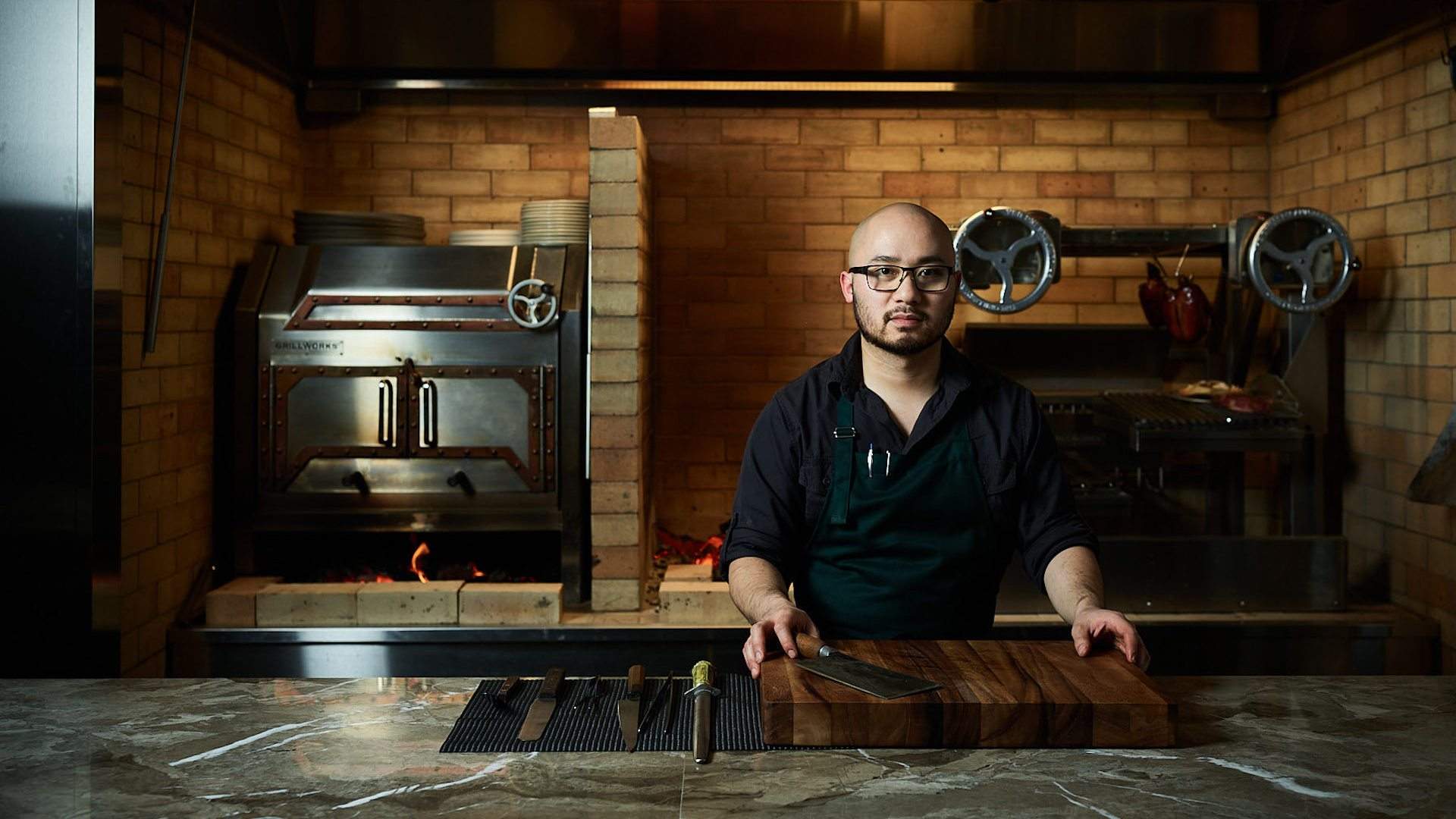
Rare is the chef who has done a better job than Khanh Nguyen of diagramming the through-line from ingredients native to Australia to the food traditions of our nearest neighbours up in Southeast Asia. Fewer still have made that lesson taste so damn good. To eat his food at Sunda, or at Aru, the new fire-focused spin-off he opened in 2021, is to slap your forehead over and over – of course these flavours work together; this is all the same part of the world! – before diving back in for more. And the flavours we’re talking about are not small. Pepperberry and betel leaf frame grilled wagyu tongue in a nod to the bo la lot of Nguyen’s Vietnamese heritage, while a flurry of sweet spanner-crab meat and white kampot pepper make a luxury of fried rice. Desserts are no less lavish – pandan perfuming a roast-potato cream caramel, say, or coconut and cultured cream conspiring to take passionfruit pavlova in a bold new direction – and cocktails driven by that same more-is-more approach make for a meal that comes out swinging, whatever the occasion.
Luke Burgess, chef/restaurateur, Seven and a Half, Hobart
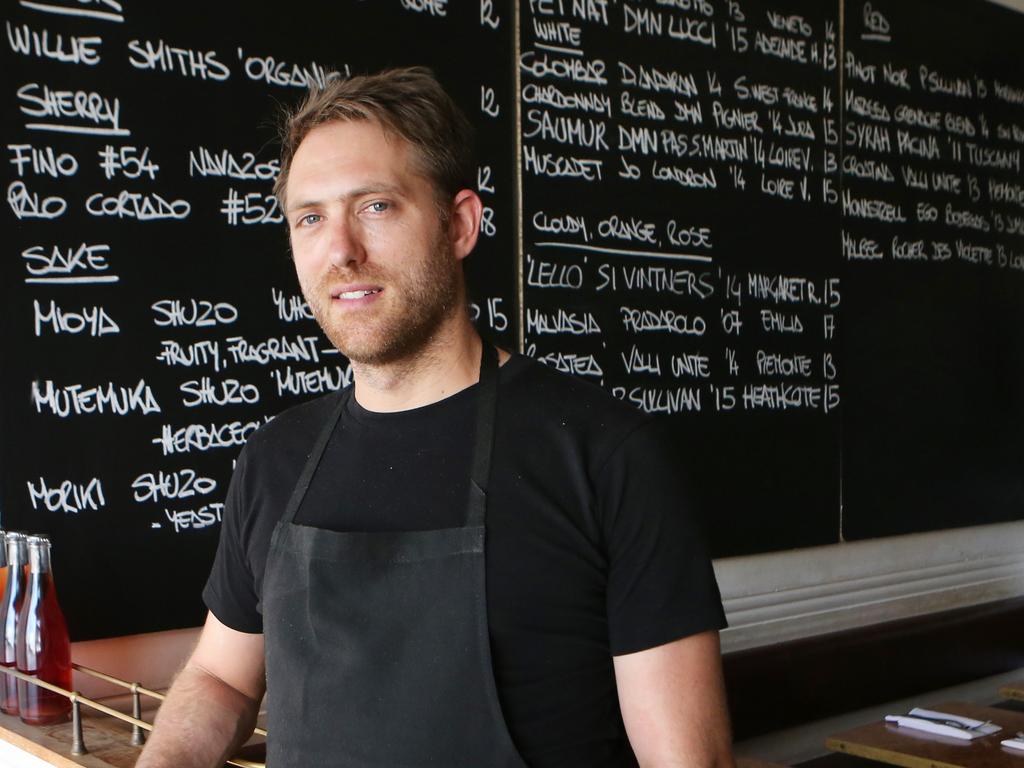
It wouldn’t be quite right to say Luke Burgess rebooted the Tasmanian restaurant scene on his own. But if you were looking for an individual who you could credit with transforming Hobart from a place of only passing interest to the destination diner into, well, a dining destination, he’d be right at the top of your list. Garagistes, the fine-dining restaurant Burgess ran to international acclaim from 2010 to 2015, raised the stakes for ambitious, locavore cuisine in Tasmania, and his brand-new project, Seven and a Half, has changed the game again. Perched in a jewel-box of a room on top of a tower in downtown Hobart, it offers rarefied omakase-style dining for just 10 diners at a time, once a week. Burgess works without a menu and without a parachute, just he and the guests and some excellent handpicked wine and sake. The intimacy of the setting gives him the freedom to tweak the menu as he goes and to showcase superb niche produce you’re not likely to see anywhere else.
Wild venison might appear as salami in an array of snacks alongside sashimi of banded morwong and a ‘sando’ of salted radish at one sitting, for instance; asparagus teamed with an ajo blanco made of hempseed and goat’s ricotta and with lovage and a sauce of nori and walnut the following week; a pecorino flavoured with native pepper makes the surprising accent for egg noodles with venus clams. There’s nothing quite like it, on or off the island, and it’s easy to see why it’s one of the most sought-after tables in town.
Rosheen Kaul, chef, Etta, Melbourne
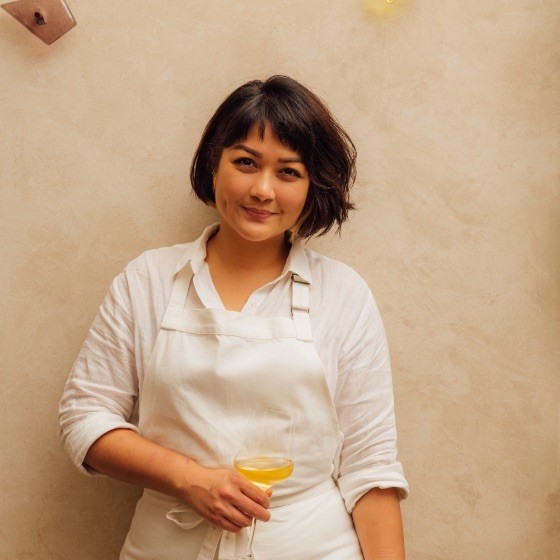
Blame it on the pork rib. Sure, when Rosheen Kaul landed at Etta she had plenty of other good things on her menu – the crunchy, spicy little pop-in-the-mouth fried school prawns with curry leaves, for one thing. But the pork rib, a foot-long hunk of a thing served on the bone, its smoky, succulent heft balanced by an oyster cream and pickled baby turnips – well, this was a statement of intent. It said ‘here is a chef who likes to cook with fire, who is clear-eyed enough to take inspiration from a dish like Korea’s bo ssäm, and remix it, riffing on that dish’s traditional accompaniments of kimchi and freshly shucked oysters, while making it completely her own’. It also said, ‘this person can really, really cook – this is ridiculously tasty’.
In landing on her feet at this hip, smartly appointed east Brunswick wine bar, Kaul has given diners the gift of a one-plus-one-equals-three situation. Owner Hannah Green keeps an enviable cellar and sets a lively, welcoming tone on the floor, and together with Kaul’s surfeit of bright, clever ideas in the kitchen, you’ve got a package that’s so much greater than the sum of its (formidable) parts.
Chris Lucas, restaurateur, Society, Melbourne

The road to Society for Chris Lucas has been long, hard and paved with serious investment. But to see the room thronged with the good and the great of Australia, some serious table-hopping and people-watching playing out at the booths under the vast, glinting chandeliers, it must feel like the years of heartache, and the last-minute curveball of a parting of ways with Martin Benn, the former Sepia chef enlisted to open the restaurant, have all been worth it.
Take a look around Society’s elegantly muted Collins Street dining room and you’ll see diners laying down substantial cash for a wine list that goes long on Romanée-Conti and other five-figure bottles, diving deep into a cocktail bar rich in vintage offerings (hello $125 Martini made with 1950s spirits) and of course plunging into the menu with a fervour sharpened like never before by lockdown. And what does all that outlay get the happy guest? Plates that combine a tightly edited, almost Midcentury Modern aesthetic, sharpened with the occasional Japanese accent. Raw tuna has seldom been more melting than here, wrapped in buttery ribbons of jamón Ibérico, while crème fraîche shot through with wasabi, a plate of Japanese-style pickled cucumbers, and a shio koji jus accompany the epic smoked wagyu prime rib. Heady stuff. Culinary Masters might historically have been all about chefs, but in Society today we find the triumph of the vision of the restaurateur.
Nik Hill, chef/restaurateur, Porcine, Sydney
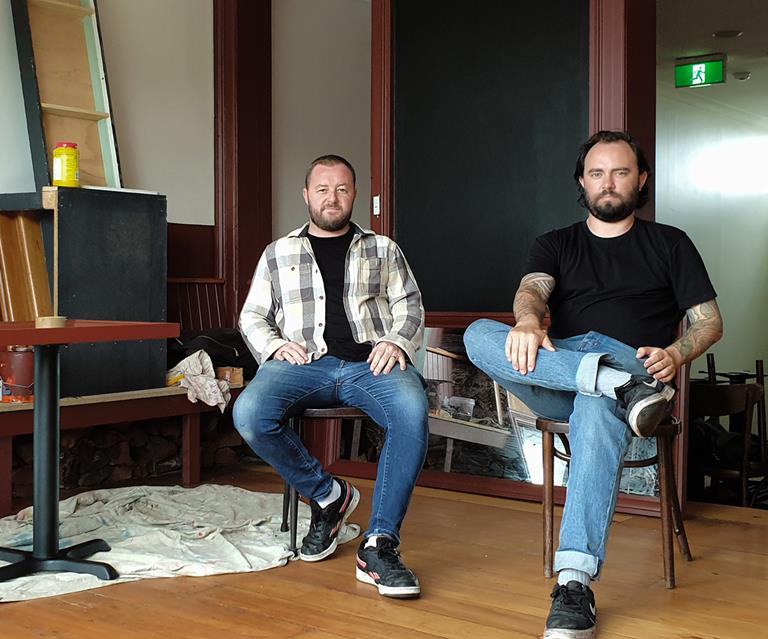
Speaking of Sepia, Nik Hill certainly can’t be said to be following blindly in the footsteps of his alma mater. After he left the Sydney fine diner, he got into smoking eels, then did a turn cooking pub food at Woolloomooloo landmark The Old Fitzroy, then swerved again with Anglo-Italian food at The Milan Cricket Club pop-up before settling at Porcine. You might struggle to find intimations of Sepia or anything Anglo-Italian in Hill’s menu, but his smoked eel appears right at the top – albeit in the form of a smoked-eel vinegar accompanying rock oysters.
A bistro above a bottle-shop, Porcine is as lusty as the name would suggest, channelling the gutsier side of the French culinary canon. Grilled ox tongue will appear one night au poivre-style in a glossy pepper sauce, and on another cooked en croûte, swaddled in pastry and foie gras. As rich as it all sounds, Hill has the palate and the technical finesse to keep it all in balance – and there’s always another dip into the exceptional drinks list if the occasion demands a corrective.
Ben Russell, chef/restaurateur, Rothwell’s, Brisbane
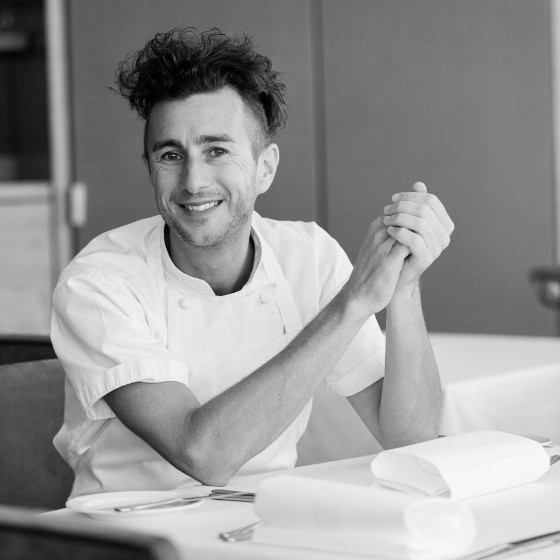
Who better to lead the bistro renaissance for the Brisbane CBD than Ben Russell? Having cut his teeth as a young chef in the 1990s at Est Est Est, the famously tough Melbourne restaurant known for producing some of the greatest kitchen talent of a generation, he did the obligatory stint in Europe before returning to Australia to become one of Matt Moran’s most trusted lieutenants. Russell moved to Queensland to open the Brisbane outpost of Moran’s Aria flagship, and after a stellar run at the top echelon of the city’s finer dining, he’s back with a bang at Rothwell’s.
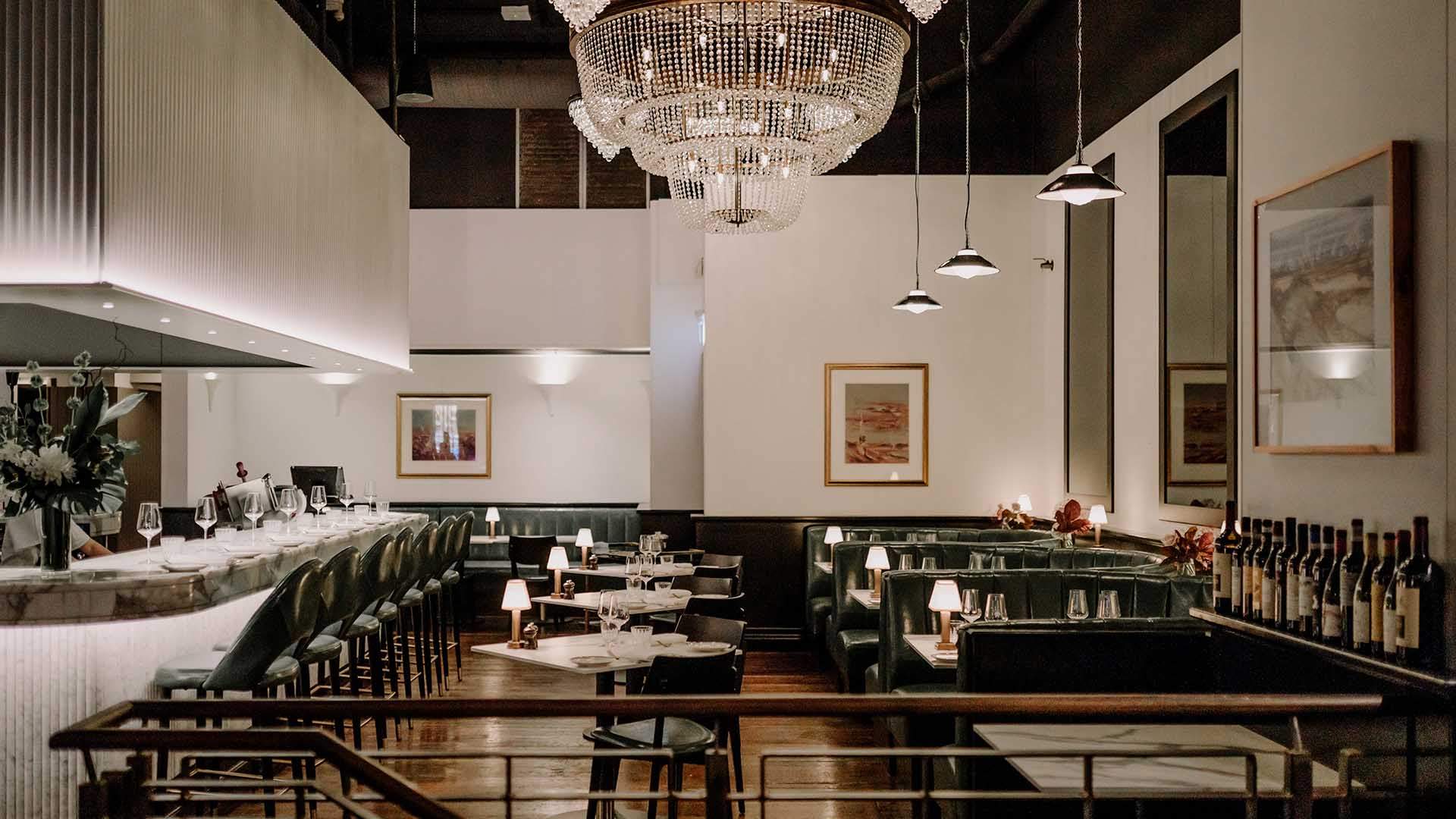
Opened with Dan Clark, of the celebrated Addley Clark Fine Wines import company and 1889 Enoteca, the restaurant is the kind of meeting of kitchen talent, a building with great bones and a backer with a frankly exceptional wine cellar that big-city diners dream of. Is Rothwell’s going to stake the sort of claim on the big end of town that Rockpool Bar & Grill holds in Sydney? With Russell plating up perfectly polished renditions of steak tartare, prawn cocktail and a seafood platter worth pushing the boat out for, the indications are positive. And if the offering from the grill – a full chorus of big, juicy rib-eyes and T-bones complemented by onion rings, watercress salad and a full battery of condiments – doesn’t get you reaching happily for the Barolo section of the wine list, the beef Wellington, resplendent in a golden jacket of fine pastry and served to share, will definitely get you over the line.
Daniel Pepperell and Michael Clift, chefs/restaurateurs, Bistrot 916, Sydney
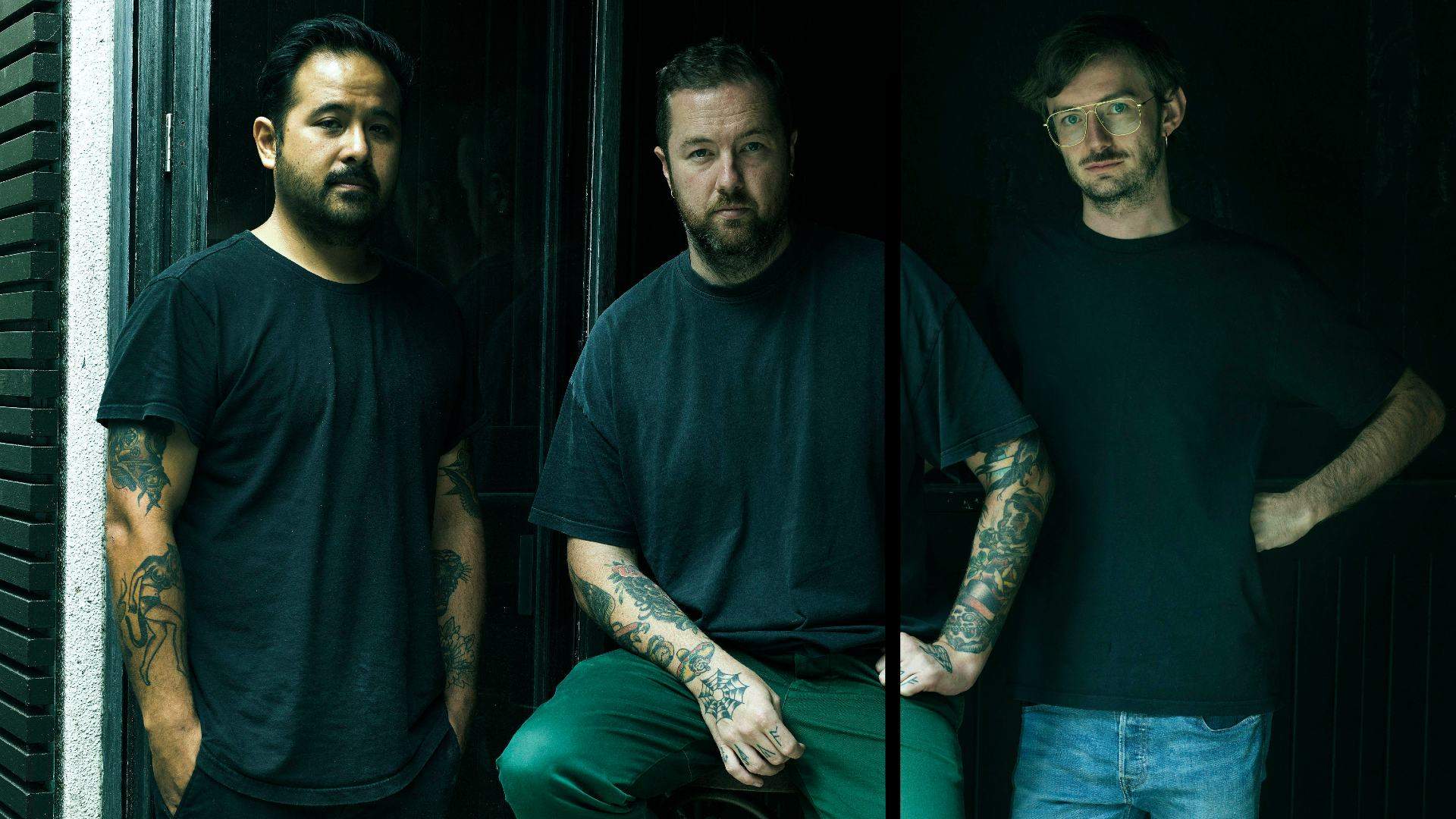
Daniel Pepperell is the master of the knowing twist. You wouldn’t call him a deconstructionist – not for Pepperell the blobs, foams and smears. No, his signature move is more a savvy spin. The dish he plays with will remain recognisable, true to its roots, yet the flick Pepperell (and now his friend and chef-at-arms Michael Clift) gives a given classic as it leaves his pass makes it distinctively, recognisably his own. At 10 William Street he enriched his Bolognese with a swig of fish sauce, and daubed caviar on his carpaccio. At Restaurant Hubert he plated his escargots with XO sauce butter and laid a shimmering maple-syrup jelly over his satin duck liver parfait. And now, here at Bistrot 916, the venue he opened with Clift and sommelier savant Andy Tyson, that same joie de vivre remains at the fore. There’s a zesty, give-the-people-what they want spirit here that’s entirely fitting for the bistro genre and for the raffish Potts Point setting. Among the main courses Clift and Pepperell offer not just a classically crowd-pleasing steak frites – there’s also a duck frites, a mushroom frites and, for the truly OTT option, a market-priced lobster frites to boot. It’s exuberant, it’s packed with flavour, and it’s a lot of fun.
Blaze Young, chef, Nieuw Ruin, Perth
‘Good food. Good cocktails. Weird wine.’ Nieuw Ruin’s name might seem a bit curly on first glance, but the mission statement is very straightforward. And while the wine part of the equation will elicit different reactions depending on which side of the minimal-intervention fence you stand, Blaze Young’s brief is to the point and a delight to all. She fashions garfish into rollmops, serves her crudités with French onion dip and curries her fries. Her gift for handling offal has brought many a formerly hesitant diner into the fold, not least for her Wagin duck livers, which she serves on toast, tossed in a cream sauce spiked with a dose of hot mustard that judiciously cuts the livers’ intensity. Best of all, her food is wine-friendly, even the spicy stuff, from the oysters and mignonette (just made for a lush Fanny Sabré aligoté) to the Torbray asparagus and zucchini with goat’s curd (the perfect alibi for a bottle of Sebastien Riffault Sancerre). Here’s a young chef very much on the up – and you’ll want to be there for the ride.
Clare Smyth, chef/restaurateur OnCore, Sydney
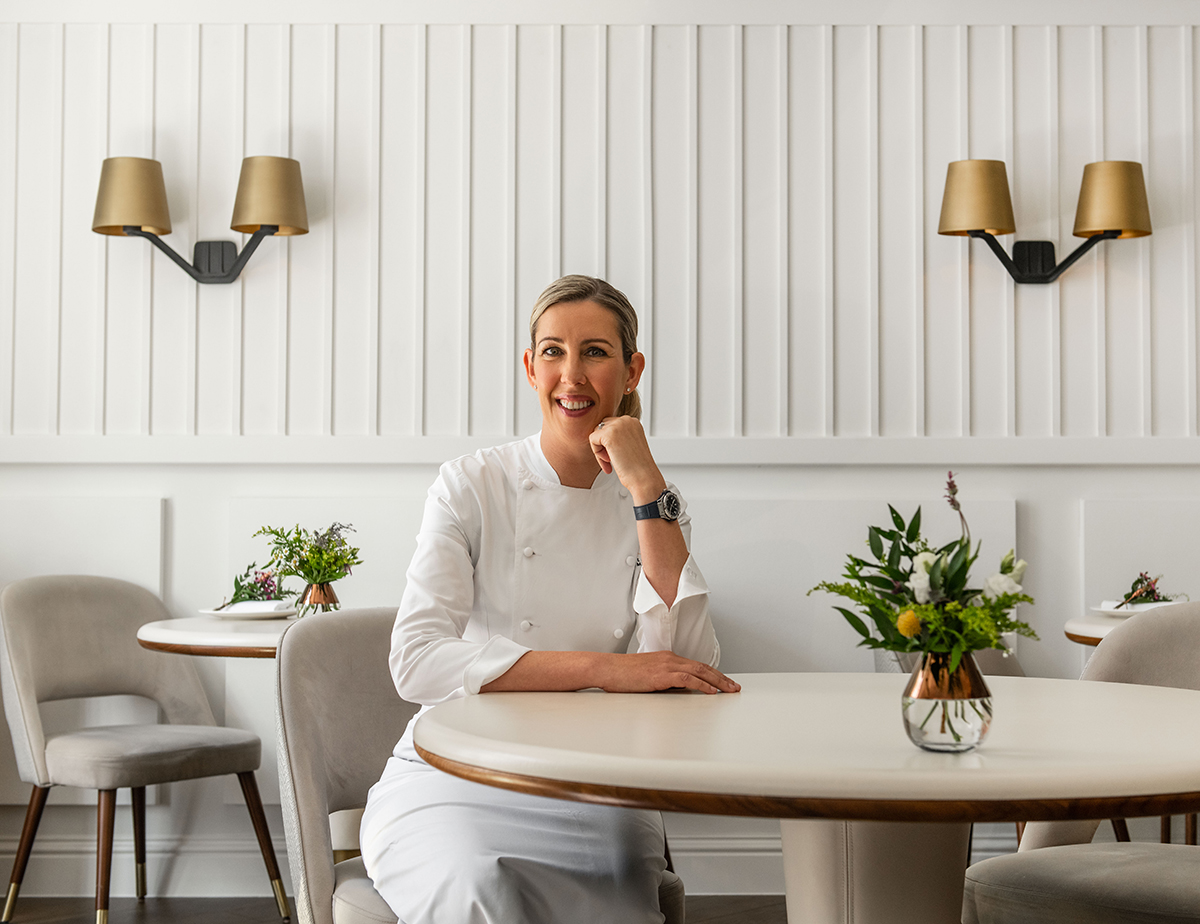
How do you follow up a career that takes in experience under Alain Ducasse and Gordon Ramsay at their respective peaks, that has earned an MBE, and the first and only three-star rating from Michelin for a restaurant run by a woman in the UK, not to mention being named The World’s Best Female Chef by the World’s 50 Best Restaurants? If you’re Clare Smyth, your encore is OnCore, planting the flag in Sydney with a sister restaurant to London’s Core.
What sets Smyth apart from the rest of the Franglais fine-dining pack? There’s the clever, playful weave of British classics and Australian ingredients, for one. Playful, that is, but underpinned by serious craft. Fans will be thrilled to learn that ‘potato and roe’ has made the journey with her. The Core signature dish pays homage to Smyth’s Northern Irish roots with a potato cooked long and slow to a perfectly luscious texture before being topped with roes of herring and trout. Not for nothing did Bloomberg call it “the world’s best potato”. The plush room commands views across the harbour to the horizon, and while the ‘casino’ setting might put cynics in mind of a cash-grab from a chef domiciled on the other side of the world, dishes this flavoursome and elegant can only be executed by a team with total commitment. It’s the real deal.
—
Join us for an exclusive evening of fine dining at Society Melbourne – a Robb Report Culinary Master for 2021. To secure your ticket, book now via the Robb Report Shop.
Subscribe to the Newsletter
Recommended for you
Celebrating Neil Perry, Our Culinary Master 2024
Discover The Ultimate Haute-Cuisine Experience
July 22, 2024
Nature’s Little Luxury
In a single slurp, oysters have moved up in the world to become one of Australia’s hero seafoods.
July 5, 2024
You may also like.
By Josh Bozin
24/07/2024
You may also like.
5 Lounge Chairs That Add Chic Seating to Your Space
Daybeds, the most relaxed of seating solutions, offer a surprising amount of utility.
Chaise longue, daybed, recamier, duchesse brisée—elongated furniture designed for relaxing has a roster of fancy names. While the French royal court of Louis XIV brought such pieces to prominence in fashionable European homes, the general idea has been around far longer: The Egyptian pharaohs were big fans, while daybeds from China’s Ming dynasty spurred all those Hollywood Regency fretwork pieces that still populate Palm Beach living rooms. Even Mies van der Rohe, one of design’s modernist icons, got into the lounge game with his Barcelona couch, a study of line and form that holds up today.
But don’t get caught up in who invented them, or what to call them. Instead, consider their versatility: Backless models are ideal in front of large expanses of glass (imagine lazing on one with an ocean view) or at the foot of a bed, while more structured pieces can transform any corner into a cozy reading nook. Daybeds may be inextricably linked to relaxation, but from a design perspective, they put in serious work.

Emmy, Egg Collective
In designing the Emmy chaise, the Egg Collective trio of Stephanie Beamer, Crystal Ellis and Hillary Petrie, who met as students at Washington University in St. Louis, aimed for versatility. Indeed, the tailored chaise looks equally at home in a glass skyscraper as it does in a turn-of-the-century town house. Combining the elegance of a smooth, solid oak or walnut frame with the comfort of bolsters and cushioned upholstery or leather, it works just as well against a wall or at the heart of a room. From around $7,015; Eggcollective.com
 Plum, Michael Robbins
Plum, Michael Robbins
Woodworker Michael Robbins is the quintessential artisan from New York State’s Hudson Valley in that both his materials and methods pay homage to the area. In fact, he describes his style as “honest, playful, elegant and reflective of the aesthetic of the Hudson Valley surroundings”. Robbins crafts his furniture by hand but allows the wood he uses to help guide the look of a piece. (The studio offers eight standard finishes.) The Plum daybed, brought to life at Robbins’s workshop, exhibits his signature modern rusticity injected with a hint of whimsy thanks to the simplicity of its geometric forms. Around $4,275; MichaelRobbins.com

Kimani, Reda Amalou Design
French architect and designer Reda Amalou acknowledges the challenge of creating standout seating given the number of iconic 20th-century examples already in existence. Still, he persists—and prevails. The Kimani, a bent slash of a daybed in a limited edition of eight pieces, makes a forceful statement. Its leather cushion features a rolled headrest and rhythmic channel stitching reminiscent of that found on the seats of ’70s cars; visually, these elements anchor the slender silhouette atop a patinated bronze base with a sure-handed single line. The result: a seamless contour for the body. Around $33,530; RedaAmalou
Dune, Workshop/APD
From a firm known for crafting subtle but luxurious architecture and interiors, Workshop/APD’s debut furniture collection is on point. Among its offerings is the leather-wrapped Dune daybed. With classical and Art Deco influences, its cylindrical bolsters are a tactile celebration, and the peek of the curved satin-brass base makes for a sensual surprise. Associate principal Andrew Kline notes that the daybed adeptly bridges two seating areas in a roomy living space or can sit, bench-style, at the foot of a bed. From $13,040; Workshop/ APD
Sherazade, Edra
Designed by Francesco Binfaré, this sculptural, minimalist daybed—inspired by the rugs used by Eastern civilizations—allows for complete relaxation. Strength combined with comfort is the name of the game here. The Sherazade’s structure is made from light but sturdy honeycomb wood, while next-gen Gellyfoam and synthetic wadding aid repose. True to Edra’s amorphous design codes, it can switch configurations depending on the user’s mood or needs; for example, the accompanying extra pillows—one rectangular and one cylinder shaped— interchange to become armrests or backrests. From $32,900; Edra
You may also like.
By Josh Bozin
24/07/2024
22/07/2024
Watches & Wonders 2024 Showcase: Hermès
We head to Geneva for the Watches & Wonders exhibition; a week-long horological blockbuster featuring the hottest new drops, and no shortage of hype.
With Watches & Wonders 2024 well and truly behind us, we review some of the novelties Hermès presented at this year’s event.
—
HERMÈS

Moving away from the block colours and sporty aesthetic that has defined Hermès watches in recent years, the biggest news from the French luxury goods company at Watches & Wonders came with the unveiling of its newest collection, the Hermès Cut.
It flaunts a round bezel, but the case middle is nearer to a tonneau shape—a relatively simple design that, despite attracting flak from some watch aficionados, works. While marketed as a “women’s watch”, the Cut has universal appeal thanks to its elegant package and proportions. It moves away from the Maison’s penchant for a style-first product; it’s a watch that tells the time, not a fashion accessory with the ability to tell the time.
Hermès gets the proportions just right thanks to a satin-brushed and polished 36 mm case, PVD-treated Arabic numerals, and clean-cut edges that further accentuate its character. One of the key design elements is the positioning of the crown, boldly sitting at half-past one and embellished with a lacquered or engraved “H”, clearly stamping its originality. The watch is powered by a Hermès Manufacture movement H1912, revealed through its sapphire crystal caseback. In addition to its seamlessly integrated and easy-wearing metal bracelet, the Cut also comes with the option for a range of coloured rubber straps. Together with its clever interchangeable system, it’s a cinch to swap out its look.
It will be interesting to see how the Hermès Cut fares in coming months, particularly as it tries to establish its own identity separate from the more aggressive, but widely popular, Ho8 collection. Either way, the company is now a serious part of the dialogue around the concept of time.
—
Read more about this year’s Watches & Wonders exhibition at robbreport.com.au
You may also like.
22/07/2024
Living La Vida Lagerfeld
The world remembers him for fashion. But as a new tome reveals, the iconoclastic designer is defined as much by extravagant, often fantastical, homes as he is clothes.
“Lives, like novels, are made up of chapters”, the world-renowned bibliophile, Karl Lagerfeld, once observed.
Were a psychological-style novel ever to be written about Karl Lagerfeld’s life, it would no doubt give less narrative weight to the story of his reinvigoration of staid fashion houses like Chloe, Fendi and Chanel than to the underpinning leitmotif of the designer’s constant reinvention of himself.
In a lifetime spanning two centuries, Lagerfeld made and dropped an ever-changing parade of close friends, muses, collaborators and ambiguous lovers, as easily as he changed his clothes, his furniture… even his body. Each chapter of this book would be set against the backdrop of one of his series of apartments, houses and villas, whose often wildly divergent but always ultra-luxurious décor reflected the ever-evolving personas of this compulsively public but ultimately enigmatic man.
With the publication of Karl Lagerfeld: A Life in Houses these wildly disparate but always exquisite interiors are presented for the first time together as a chronological body of work. The book indeed serves as a kind of visual novel, documenting the domestic dreamscapes in which the iconic designer played out his many lives, while also making a strong case that Lagerfeld’s impact on contemporary interior design is just as important, if not more so, than his influence on fashion.

In fact, when the first Lagerfeld interior was featured in a 1968 spread for L’OEil magazine, the editorial describes him merely as a “stylist”. The photographs of the apartment in an 18th-century mansion on rue de Université, show walls lined with plum-coloured rice paper, or lacquered deepest chocolate brown in sharp contrast to crisp, white low ceilings that accentuated the horizontality that was fashionable among the extremely fashionable at the time. Yet amid this setting of aggressively au courant modernism, the anachronistic pops of Art Nouveau and Art Deco objects foreshadow the young Karl’s innate gift for creating strikingly original environments whose harmony is achieved through the deft interplay of contrasting styles and contexts.
Lagerfeld learned early on that presenting himself in a succession of gem-like domestic settings was good for crafting his image. But Lagerfeld’s houses not only provided him with publicity, they also gave him an excuse to indulge in his greatest passion. Shopping!
By 1973, Lagerfeld was living in a new apartment at Place Saint–Sulpice where his acquisition of important Art Deco treasures continued unabated. Now a bearded and muscular disco dandy, he could most often be found in the louche company of the models, starlets and assorted hedonistic beauties that gathered around the flamboyant fashion illustrator Antonio Lopez. Lagerfeld was also in the throes of a hopeless love affair with Jacques de Bascher whose favours he reluctantly shared with his nemesis Yves Saint Laurent.

He painted the rooms milky white and lined them with specially commissioned carpets—the tawny patterned striations of which invoked musky wild animal pelts. These lent a stark relief to the sleek, machine-age chrome lines of his Deco furnishings. To contemporary eyes it remains a strikingly original arrangement that subtly conveys the tensions at play in Lagerfeld’s own life: the cocaine fuelled orgies of his lover and friends, hosted in the pristine home of a man who claimed that “a bed is for one person”.
In 1975, a painful falling out with his beloved Jacques, who was descending into the abyss of addiction, saw almost his entire collection of peerless Art Deco furniture, paintings and objects put under the auctioneer’s hammer. This was the first of many auction sales, as he habitually shed the contents of his houses along with whatever incarnation of himself had lived there. Lagerfeld was dispassionate about parting with these precious goods. “It’s collecting that’s fun, not owning,” he said. And the reality for a collector on such a Renaissance scale, is that to continue buying, Lagerfeld had to sell.
Of all his residences, it was the 1977 purchase of Hôtel Pozzo di Borgo, a grand and beautifully preserved 18th-century house, that would finally allow him to fulfill his childhood fantasies of life in the court of Madame de Pompadour. And it was in this aura of Rococó splendour that the fashion designer began to affect, along with his tailored three-piece suits, a courtier’s ponytailed and powdered coif and a coquettish antique fan: marking the beginning of his transformation into a living, breathing global brand that even those with little interest in fashion would immediately recognise.

Lagerfeld’s increasing fame and financial success allowed him to indulge in an unprecedented spending frenzy, competing with deep-pocketed institutions like the Louvre to acquire the finest, most pedigreed pearls of the era—voluptuously carved and gilded bergères; ormolu chests; and fleshy, pastel-tinged Fragonard idylls—to adorn his urban palace. His one-time friend André Leon Talley described him in a contemporary article as suffering from “Versailles complex”.
However, in mid-1981, and in response to the election of left-wing president, François Mitterrand, Lagerfeld, with the assistance of his close friend Princess Caroline, became a resident of the tax haven of Monaco. He purchased two apartments on the 21st floor of Le Roccabella, a luxury residential block designed by Gio Ponti. One, in which he kept Jacques de Bascher, with whom he was now reconciled, was decorated in the strict, monochromatic Viennese Secessionist style that had long underpinned his aesthetic vocabulary; the other space, though, was something else entirely, cementing his notoriety as an iconoclastic tastemaker.

Lagerfeld had recently discovered the radically quirky designs of the Memphis Group led by Ettore Sottsass, and bought the collective’s entire first collection and had it shipped to Monaco. In a space with no right angles, these chaotically colourful, geometrically askew pieces—centred on Masanori Umeda’s famous boxing ring—gave visitors the disorientating sensation of having entered a corporeal comic strip. By 1991, the novelty of this jarring postmodern playhouse had inevitably worn thin and once again he sent it all to auction, later telling a journalist that “after a few years it was like living in an old Courrèges. Ha!”

In 1989, de Bascher died of an AIDS-related illness, and while Lagerfeld’s career continued to flourish, emotionally the famously stoic designer was struggling. In 2000, a somewhat corpulent Lagerfeld officially ended his “let them eat cake” years at the Hôtel Pozzo di Borgo, selling its sumptuous antique fittings in a massive headline auction that stretched over three days. As always there were other houses, but now with his longtime companion dead, and his celebrity metastasising making him a target for the paparazzi, he began to look less for exhibition spaces and more for private sanctuaries where he could pursue his endless, often lonely, work.
His next significant house was Villa Jako, named for his lost companion and built in the 1920s in a nouveau riche area of Hamburg close to where he grew up. Lagerfeld shot the advertising campaign for Lagerfeld Jako there—a fragrance created in memorial to de Bascher. The house featured a collection of mainly Scandinavian antiques, marking the aesthetic cusp between Art Nouveau and Art Deco. One of its rooms Lagerfeld decorated based on his remembrances of his childhood nursery. Here, he locked himself away to work—tellingly—on a series of illustrations for the fairy tale, The Emperor’s New Clothes. Villa Jako was a house of deep nostalgia and mourning.
But there were more acts—and more houses—to come in Lagerfeld’s life yet. In November 2000, upon seeing the attenuated tailoring of Hedi Slimane, then head of menswear at Christian Dior, the 135 kg Lagerfeld embarked on a strict dietary regime. Over the next 13 months, he melted into a shadow of his former self. It is this incarnation of Lagerfeld—high white starched collars; Slimane’s skintight suits, and fingerless leather gloves revealing hands bedecked with heavy silver rings—that is immediately recognisable some five years after his death.
The 200-year-old apartment in Quái Voltaire, Paris, was purchased in 2006, and after years of slumber Lagerfeld—a newly awakened Hip Van Winkle—was ready to remake it into his last modernist masterpiece. He designed a unique daylight simulation system that meant the monochromatic space was completely without shadows—and without memory. The walls were frosted and smoked glass, the floors concrete and silicone; and any hint of texture was banned with only shiny, sleek pieces by Marc Newson, Martin Szekely and the Bouroullec Brothers permitted. Few guests were allowed into this monastic environment where Lagerfeld worked, drank endless cans of Diet Coke and communed with Choupette, his beloved Birman cat, and parts of his collection of 300,000 books—one of the largest private collections in the world.

Lagerfeld died in 2019, and the process of dispersing his worldly goods is still ongoing. The Quái Voltaire apartment was sold this year for US$10.8 million (around $16.3 million). Now only the rue de Saint-Peres property remains within the Lagerfeld trust. Purchased after Quái Voltaire to further accommodate more of his books—35,000 were displayed in his studio alone, always stacked horizontally so he could read the titles without straining his neck—and as a place for food preparation as he loathed his primary living space having any trace of cooking smells. Today, the rue de Saint-Peres residence is open to the public as an arts performance space and most fittingly, a library.
You may also like.
By Josh Bozin
24/07/2024
Watch This Space: Mike Nouveau
Meet the game-changing horological influencers blazing a trail across social media—and doing things their own way.
In the thriving world of luxury watches, few people own a space that offers unfiltered digital amplification. And that’s precisely what makes the likes of Brynn Wallner, Teddy Baldassarre, Mike Nouveau and Justin Hast so compelling.
These thought-provoking digital crusaders are now paving the way for the story of watches to be told, and shown, in a new light. Speaking to thousands of followers on the daily—mainly via TikTok, Instagram and YouTube—these progressive commentators represent the new guard of watch pundits. And they’re swaying the opinions, and dollars, of the up-and-coming generations who now represent the target consumer of this booming sector.
—
MIKE NOUVEAU

Can we please see what’s on the wrist? That’s the question that catapulted Mike Nouveau into watch stardom, thanks to his penchant for highlighting incredibly rare timepieces across his TikTok account of more than 400,000 followers. When viewing Nouveau’s attention-grabbing video clips—usually shot in a New York City neighbourhood—it’s not uncommon to find him wrist-rolling some of the world’s rarest timepieces, like the million-dollar Cartier Cheich (a clip he posted in May).
But how did someone without any previous watch experience come to amass such a cult following, and in the process gain access to some of the world’s most coveted timepieces? Nouveau admits had been a collector for many years, but moved didn’t move into horology full-time until 2020, when he swapped his DJing career for one as a vintage watch specialist.
“I probably researched for a year before I even bought my first watch,” says Nouveau, alluding to his Rolex GMT Master “Pepsi” ref. 1675 from 1967, a lionised timepiece in the vintage cosmos. “I would see deals arise that I knew were very good, but they weren’t necessarily watches that I wanted to buy myself. I eventually started buying and selling, flipping just for fun because I knew how to spot a good deal.”
Nouveau claims that before launching his TikTok account in the wake of Covid-19, no one in the watch community knew he existed. “There really wasn’t much watch content, if any, on TikTok before I started posting, especially talking about vintage watches. There’s still not that many voices for vintage watches, period,” says Nouveau. “It just so happens that my audience probably skews younger, and I’d say there are just as many young people interested in vintage watches as there are in modern watches.”
View this post on Instagram
Nouveau recently posted a video to his TikTok account revealing that the average price of a watch purchased by Gen Z is now almost US$11,000 (around $16,500), with 41 percent of them coming into possession of a luxury watch in the past 12 months.
“Do as much independent research as you can [when buying],” he advises. “The more you do, the more informed you are and the less likely you are to make a mistake. And don’t bring modern watch expectations to the vintage world because it’s very different. People say, ‘buy the dealer’, but I don’t do that. I trust myself and myself only.”
—
Read more about the influencers shaking up horology here with Justin Hast, Brynn Wallner and Teddy Baldassare.
You may also like.
By Josh Bozin
24/07/2024
This Pristine 1960 Ferrari 250 Spider Could Fetch $24 Million at Auction
The car wears the same colours and has the same engine it left the factory with.
Some Ferraris are just a little bit more important than others.
Take, for example, the 1960 250 GT SWB California that RM Sotheby’s is auctioning off during this year’s Monterey Car Week. Any example of the open-top beauty would attract interest, but this one just so happens to be the first one that was built.
The 250 is one of the most legendary series of cars in Ferrari history. Between 1952 and 1964, the company released 21 different 250 models—seven for racetracks, 14 for public roads—of which the “Cali Spider” might be the most well regarded, thanks to its potent V-12 and a Pininfarina-penned design that is one of the most beautiful bodies to grace an automobile. The roadster, which was specifically built for the U.S., made its debut in 1957 as a long-wheel-base model (LWB), but it wasn’t until the SWB model debut in 1960 that it became clear how special it was. This example isn’t just the first to roll off the line. It’s the actual car that was used to introduce the world to the model at the 1960 Geneva Motor Show.

Just 56 examples of the 250 GT SWB California Spider would be built by Scaglietti during the three years it was in production. The first of those, chassis 1795 GT, is finished in a glossy coat of Grigio. The two-door had a red leather interior at Geneva but was returned to the factory and re-outfitted with black leather upholstery before being delivered to its original owner, British race car driver John Gordon Bennet. Six-and-a-half decades later the car looks identical to how it did when it left the factory the second time.

In addition to its original bodywork, the chassis 1795 GT features its original engine, gearbox, and rear axle. That mill is the competition-spec Tipo 168, a 3.0-litre V-12 that makes 196.1 kW. That may not sound like much by today’s standards, but, when you consider that the 250 GT SWB California Spider tips the scales around 952 kilograms, it’s more than enough.

The first 250 GT SWB California Spider is scheduled to go up for bid during RM Sotheby’s annual Monterey Car Week auction, which runs from Thursday, August 15, to Saturday, August 17. Unsurprisingly, the house has quite high hopes for the car. The car carries an estimate of between $24 million and $26 million, which could make it one of the most expensive cars ever sold at auction.

You may also like.
By Josh Bozin
24/07/2024






